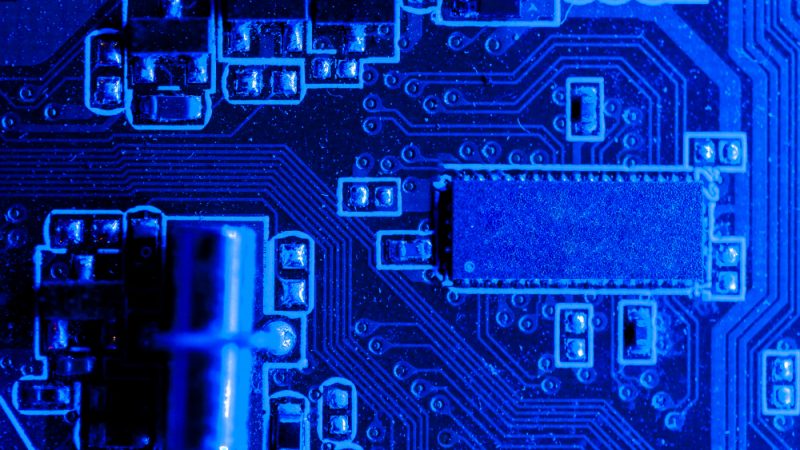Navigating the Electronics Supply Chain: A Guide to Choosing the Right Component Distributor
Supply chains wrap around the world, as raw materials and basic components travel through elaborate networks to become increasingly sophisticated products. But the supply chain for every component eventually reaches its end.
This is a common problem for legacy programs that aren’t in sync with the marketplace. If you are manufacturing something with a 15 to 20-year lifecycle, then you are out of sync with a marketplace that tends to run on a 3-5-year cycle. For these programs, effective electronic component obsolescence management is crucial.
During a component’s lifecycle, you can simply buy your components through the authorized dealer supply chain. But, once the original manufacturer obsoletes that component, you must move on to the non-authorized supply chain.
Navigating the Wild West of sourcing components outside of the unauthorized dealer supply chain can be fraught, especially if you work in such life-critical manufacturing fields as automotive, aerospace, aviation, defense, and health care. A defective component in a video game console or refrigerator is upsetting to customers, but a faulty component in a flight navigation system or a ventilator can kill someone.
This article is designed to help you locate the end-of-life components you need safely and securely while minimizing your liability.
The Original Component Manufacturer (OCM) Supply Chain
During the lifecycle of a component you purchase parts from that component’s authorized distributor. This is fairly straightforward, although even then it’s important to note that an authorized distributor for one OCM’s product line may not be authorized for all lines.
For example, if you’re buying a component from an authorized distributor of Texas Instruments component ABC, you might also assume they’re also authorized for Texas Instruments component DEF. But if they’re not, and you order the component from them, they may not purchase it through an authorized channel. That’s why you should always request the OCM’s certificate of conformance (C of C) with your procurement.
The Non-Authorized Supply Chain
When a component is obsoleted or unavailable in time to meet your production run then you will need to move on to the non-authorized supply chain.
There are a number of different ways to source end-of-life components, each with its own risks, costs, and delivery timelines. It would be great if you could simply Google a component and call up whoever is at the top of the results, but that’s risky.
Supply Chain Risk Mitigation involves vetting component sources, testing components when the chain of custody is broken, and having a process for discovering and reporting counterfeits.
Manufacturers often prefer to turn this work over to Trusted Certified Independent Distributors. These are companies whose entire business revolves around sourcing and vetting obsoleted components, so they’re able to navigate the intricacies of properly vetting vendors, building a reliable network, and verifying components. They are able to carry the liability for their customers because they specialize in sourcing from the open market and know how to avoid the pitfalls.
Those pitfalls are many. For example, parts procured from the open market typically have gaps in the chain of custody. If you don’t know where a component is from, when it was made, and how it was stored, then you don’t know what you’re really getting.
It’s also important to be aware of a component’s lifecycle. If you find a component that’s been out of production since 2019 but has a 2022 date code, that’s a clear red flag that something is wrong.
Ways to Source End-of-Life Components
Aftermarket Manufacturers
When a component is obsoleted, one of the best, lowest-risk alternatives is an aftermarket manufacturer. These are companies that buy bare die – unpackaged semiconductor chips that haven’t been assembled into a final product.
When Analog Devices says they’re not making chip XYZ anymore, they may have 50,000 bare dice left. The Aftermarket manufacturer can buy them, package the components, and test them to the standards required for high-end users, thus extending the component lifecycle. You can also buy the bare dice yourself, find a qualified aftermarket manufacturer, sell them the dice, have them make your parts, and buy those parts back.
Aftermarket is a great solution, but it’s one that requires careful planning as it can take a year to go from buying the dies to producing finished, tested components.
The Secondary Market
You can find end-of-life components on the open market that were sold off by contract manufacturers who didn’t want to stock their excess inventory or through manufacturer production overruns.
There are many online listing services for sourcing obsolete electronic components, and one of them is likely to show the component you are looking for. But even some generally reliable online sources don’t have the capability to vet all the vendors listing components on their service. Without properly vetting the vendor listing the component you are interested in procuring, the probability of introducing a substandard or counterfeit part into your supply chain increases.
Components found on the open market may be sold from company to company, and these companies don’t always have the checks and balances in place to maintain the chain of custody. Using a component without full chain of custody paperwork is taking a serious risk. A component may have been stored for months in an overheated warehouse. It may be remarked. It may be faulty.
Or it may be fine. The only way to be sure is to test it. One of the things a certified independent distributor is set up for is testing components to ensure their authenticity and functionality. There are various testing levels required that depend on how the component was procured, what program it’s going into, and other factors. Once components pass the appropriate tests you know they are authentic and will function, even without knowing every step of their journey.
Trusted Independent Distributors with a counterfeit avoidance plan quarantine suspect or counterfeit parts so that they do not re-enter the supply chain, and report their findings to the appropriate channels. That’s part of their job, keeping counterfeit components out of the supply chain, and these independent component distributors can take that on because their audited quality management systems prevent them from passing counterfeits on to their customers.
Experienced Independent Distributors have vigorous processes in place to limit the risk of bad parts, such as vetted lists of vendors that have proven their trustworthiness.
Brokers
Like independent distributors, brokers locate components and sell them to manufacturers. But they have fewer or no checks in place. They don’t test components or verify the chain of custody. They lack certifications. They move components from one company to another. They may never even see the parts for themselves.
Using brokers as component suppliers is your riskiest option, simply because even reputable brokers aren’t set up to do the sort of quality control needed for life-critical programs.
Vetting an Independent Distributor
When partnering with an independent distributor you need to properly vet them, especially in regards to testing and certifications. Certifications are proof they have a regularly audited quality management system and tell you the specific standards the distributor is held to. Ask for a copy of all their certifications.
Here are the most important questions you should ask when vetting an independent distributor:
- Does your company maintain an approved supplier list (ASL/AVL)?
- Do you offer testing for components? How are the required tests determined? Is the test plan provided in the quoting process?
- How do you assess your third-party test facilities for suitability to perform authenticity testing?
- Are you AS6081 certified, which means you have a Counterfeit Avoidance Plan?
- Are you properly certified to deal in components in the relevant industry? For example, you need to be AS9120B certified to work with the aviation, space, and defense industries. Any distributor with an AS9120B has a very rigorous approach.
Frequently Asked Questions
- How do I prepare for component obsolescence or shortages?
- Utilize risk management software to monitor your BOM in real-time for shortages as well as obsolescence.
- Monitor your alternates as well to identify last-time buys early.
- Partner with Independent Distributors you trust to assure reliable stock.
- Is it safe to search for components online?
- Online shopping resources are a relatively high-risk option when seeking an electronic parts supplier. Whether you want to take a chance depends in part on what the component is going into. If you’re making an entertainment product you have much less liability than when manufacturing something life-critical.
- Why is the chain of custody important?
- When you get a component, you ideally want to know every step of that component’s journey in order to make sure that it was properly stored from beginning to end. If that chain of custody is not established, you need rigorous testing to reestablish it.
- How do I locate hard to find components?
- If you’re struggling to find a particular component, your best bet is to locate a reputable independent distributor. They have many resources that allow them to determine the best way to procure the part you need.
Conclusion
Understanding the risks within the global electronics supply chain is key to making sure you get reliable components.
When possible, buy components through the OCM’s verified authorized distributor channels.
An authorized distributor for one product line may not be the authorized distributor for all product lines from that OCM.
Being proactive in developing a reliable open market supply chain will reduce your risk and costs while keeping your production line moving.
Aftermarket solutions are a great option when a component has been obsoleted, but you need to plan well in advance.
Components without a chain of custody should be tested. If they prove to be counterfeit, they should be reported, confiscated, and destroyed.
A vetted Independent Distributor can supply reliable components and take on the liability involved in sourcing components on the open market. They are also able to help you prepare for shortages and obsolescence.
Let Secure Components Be Your Supply Chain for End-of-Life Components!
Component shortages and obsolescence can wreak havoc on your business, and a reliable source for parts is crucial to avoid disruptions. Secure Components has the market knowledge, resources, and years of experience you need to ensure you get the components you need.
Utilization of our RAS software to monitor your BOM in real time will help avoid shortages and proactively plan for obsolescence.
When you need a reliable supply chain for your components, choose Secure Components. We’re Assurance Made Simple.
Contact us today for a better supply chain tomorrow!






